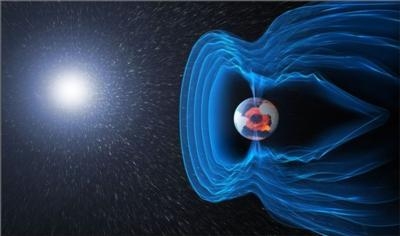Fri, Aug 18, 2017
Calls For Proposals For Experiments To Be Conducted In Darmstadt, Germany
Cosmic radiation is considered the main health hazard to human spaceflight and space exploration of the Moon, Mars and beyond, which is why ESA has made cosmic radiation a focus of its research program.

Radiation poses a risk to the human body in the form of cancer, central nervous system disorders, cardiovascular problems and tissue degeneration. Beyond Earth’s magnetic field, its full force is a barrier to human exploration of the Solar System. “Crewmembers may be exposed to different doses and qualities of radiation, threatening life quality and individual survivability, thereby disrupting mission success,” explains Jennifer Ngo-Anh, head of Human Research at ESA. “This creates a need for investigations into biological effects of space radiation, in order to allow more accurate risk assessments, which in turn leads to more accurate planning of countermeasures.”
Spacecraft and spacesuits are lined with protective materials that reduce radiation exposure to within acceptable limits. The challenge is in defining this limit for spaceflight beyond low Earth orbit. Researchers need to understand the full biological effects of cosmic rays to accurately calculate how much cosmic radiation exposure humans can safely withstand.
To address these issues, ESA has announced an opportunity to investigate the biological effects of space radiation at the GSI Helmholtz Center for Heavy Ion Research. Located in Darmstadt, Germany, GSI has collaborated with ESA on the use of its high-energy accelerator since 2007.
Proposed experiments should contribute to improving the risk assessments of cosmic radiation exposure or to studying countermeasures on cells to allow safe and stable human space exploration.
Results of such experiments will also have application for life on Earth: though well protected, humans are not altogether immune from radiation exposure. Data from these studies inform us of risks of radiation exposure on Earth as well as improve radiation therapy for cancer treatment.
(Source: ESA news release. Image provided)
More News
He Attempted To Restart The Engine Three Times. On The Third Restart Attempt, He Noticed That Flames Were Coming Out From The Right Wing Near The Fuel Cap Analysis: The pilot repor>[...]
Make Sure You NEVER Miss A New Story From Aero-News Network Do you ever feel like you never see posts from a certain person or page on Facebook or Instagram? Here’s how you c>[...]
From 2009 (YouTube Edition): Leading Air Show Performers Give Their Best Advice for Newcomers On December 6th through December 9th, the Paris Las Vegas Hotel hosted over 1,500 air >[...]
Aero Linx: NASA ASRS ASRS captures confidential reports, analyzes the resulting aviation safety data, and disseminates vital information to the aviation community. The ASRS is an i>[...]
“For our inaugural Pylon Racing Seminar in Roswell, we were thrilled to certify 60 pilots across our six closed-course pylon race classes. Not only did this year’s PRS >[...]
 NTSB Final Report: Rutan Long-EZ
NTSB Final Report: Rutan Long-EZ ANN FAQ: Turn On Post Notifications
ANN FAQ: Turn On Post Notifications Classic Aero-TV: ICAS Perspectives - Advice for New Air Show Performers
Classic Aero-TV: ICAS Perspectives - Advice for New Air Show Performers ANN's Daily Aero-Linx (06.28.25)
ANN's Daily Aero-Linx (06.28.25) Aero-News: Quote of the Day (06.28.25)
Aero-News: Quote of the Day (06.28.25)



